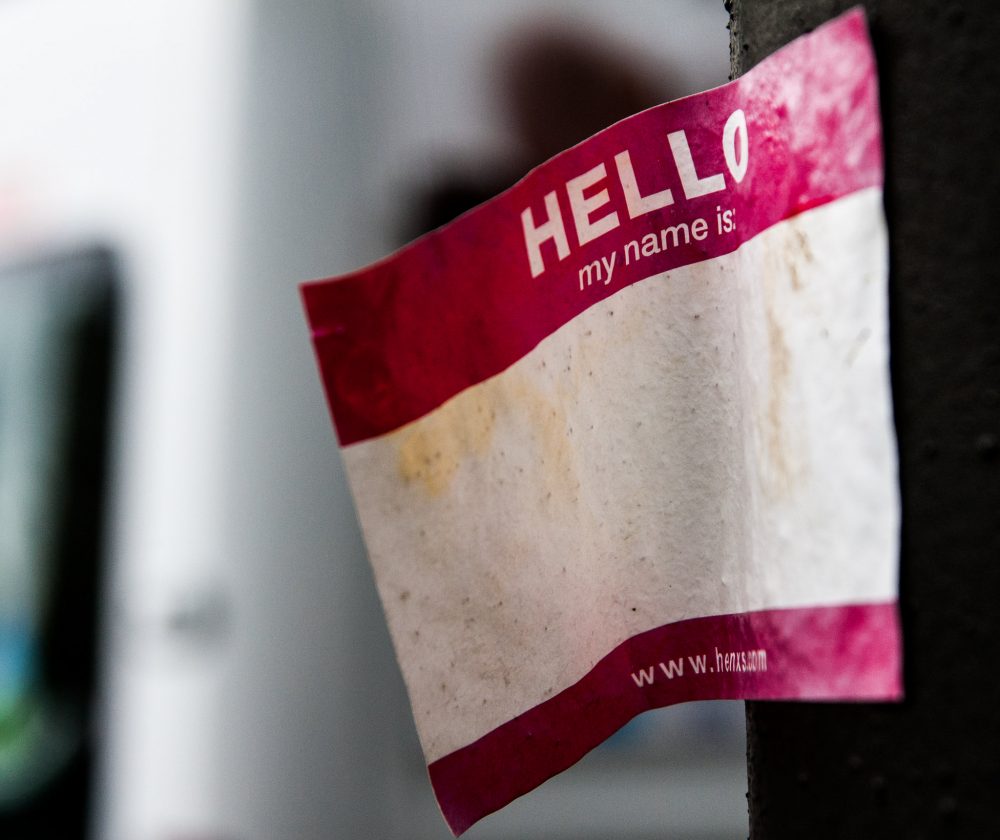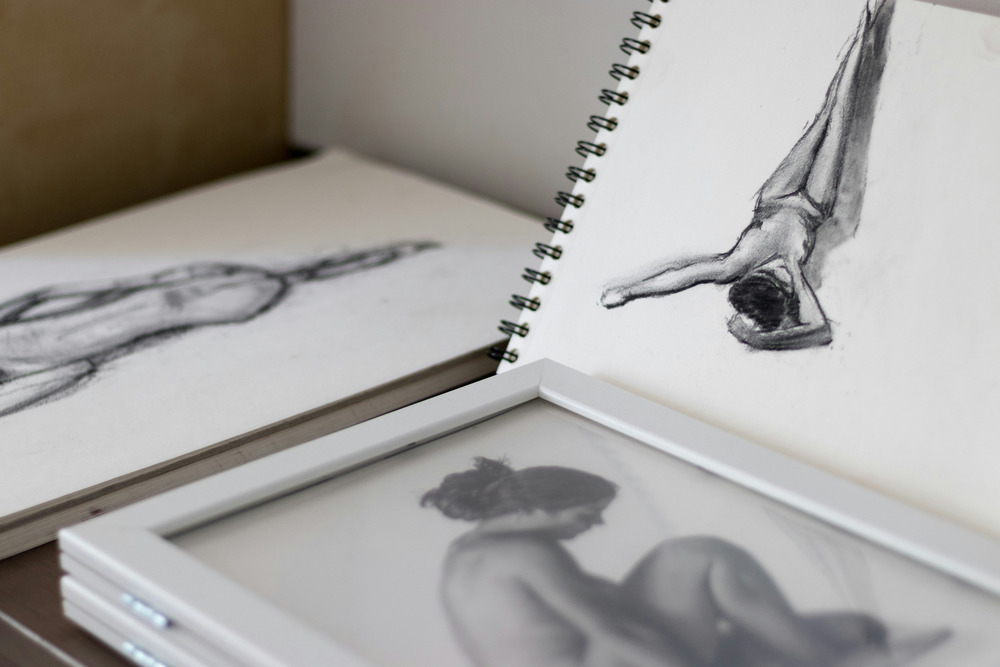Craft
Why I Don’t Publish Under My Husband’s Name
The history of women publishing our work is intertwined with the history of women attempting to control our own identities

A letter arrived for my birthday addressed to another woman. Despite years of marriage, my family forgets I never changed my name. With a consistency that’s a bit baffling, they often address letters to me with my husband’s name. Like many anachronistic episodes that occur between generations, they wrote a check to me once with this other woman’s name. I had to ask them to send it again, reminding them the bank will not recognize the name with my account.
I’ve reminded them and I know they don’t do it maliciously, but it always gives me pause. It’s the knock of presumption, that I am not who I am—or who I should be—that arrives with each envelope. The demands of an imposed tradition, that would have me absent myself from my own identity and take a man’s name—it’s not a minor request. It perpetuates the expectation of silence and erasure that has been imposed upon women for generations—that our identity can only exist if it is contingent upon a man.
Women have had to conceal and contort their identities in order to be visible in public since the advent of printed text.
The expectation that a woman should take her husband’s name—and the startling fact that despite a recent uptick in “maiden” names, the majority of women still take their husband’s name—is a continual negotiation of women’s identity, and of their visibility in public life. Every time I see that other woman’s name in reference to myself I am reminded of all the women whose names are missing or have been erased from history—of what it does to one’s sense of identity when you cannot attach your own name to what you write or create. Women have had to conceal and contort their identities in order to be visible in public since the advent of printed text.
When Mary Wroth (1587-1653), one of the first English women to publish an original work, offered her own name in print—a novel with a plot that appeared to reveal her personal life—she was roundly condemned for it. Edward Denny, an English courtier and member of parliament, accused her of being a “hermaphrodite in show, in deed a monster.” Another critic claimed she “thincks she dances in a net” —meaning that a woman should only appear (dance) in public veiled (netted) and unknown. It was far too obvious that Wroth was brazenly making herself visible.
Women have for so long been caught within that net—forced to live in silence and invisibility, actions guarded, knowable only as the property of father or husband. The formal legal framework for marriage—brought by the Normans to England and later carried across oceans to North America—is based on the idea that women are femme covert, literally a “covered woman.” Covered by their bonds to men, a woman was not—and could not be—legally considered a separate entity. The language in Blackstone’s Commentaries on the Laws of England (1765-1769) is blunt:
By marriage, the husband and wife are one person in law: that is, the very being or legal existence of the woman is suspended during the marriage…a man cannot grant any thing to his wife, or enter into covenant with her: for the grant would be to suppose her separate existence. [Women]…perform everything…under the protection and influence of her husband, her baron, or lord.
While marriage unified husband and wife as one, the one was the husband. As a result, women’s identities have been covered and concealed—and in too many cases, written out of existence.
As a married woman did not exist under coverture laws, she could not own property, could not own the wages she might make, obviously could not vote, and could not publicly claim a name of her own (an issue that maddeningly still exists in some countries). As an English court record of 1340 reflects: “when a woman took a husband, she lost every surname except ‘wife of.’”
While marriage unified husband and wife as one, the one was the husband.
Suffragists in the nineteenth century would argue that coverture laws were akin to slavery, relegating women to chattel under the control of a “Head and Master,” who made all decisions over their bodies, their households, their property. Despite movements to change such laws, spearheaded by the advocacy of Lucy Stone in America, coverture laws remained a part of legal structures in the United States into the twentieth century. In 1937, the Alabama Supreme Court held that “the general custom was for a wife to be designated by the surname and first name of her husband, together with the prefix ‘Mrs.,’” noting that this identification of married women was “more perfect and complete” than the use of their own first name (Roberts v. Grayson, 173 So. 38, 39 (Ala. 1937)). It wasn’t until 1966 that a Supreme Court ruling declared coverture laws an “archaic remnant of a primitive caste system,” intent on supporting male privilege and female subjugation. And yet it wasn’t until 1981 that the Supreme Court effectively revoked coverture frameworks, ruling that the practice of male-rule in marriage was unconstitutional (Kirchberg v. Feenstra, 450 US 455).
In the decade after Lucy Stone and Henry B. Blackwell married with a very public protest of equality—a marriage officiated by writer, abolitionist, and suffragist Thomas Wentworth Higginson (friend, mentor and eventual publisher of Emily Dickinson’s poetry)—Dickinson wrote:
…God sends us Women—
When you—hold—Garnet
to Garnet—
Gold—to Gold—
Born—Bridalled—Shrouded—
In a Day—
“My Husband”—women say—
Stroking the Melody—
Is this the way?
As a woman was covered into marriage—veiled, bridalled, shrouded—the erasure of her identity was complete.
A friend of our family died recently—a man who had been like an uncle. At the funeral, we shared stories of his humor and stoicism. Months later our friend’s widow (a term that still implies a woman’s possession by a husband) shared that while she was mourning his absence, she was surprised to find herself feeling a sense of freedom—to be the femme sole—in charge of her own choices, hearing her own voice.
The frank truth of that recognition felt profound. Despite some progress made legally with regard to coverture laws, the legacy of the framework persists. If a woman does not sign her own name throughout life, her identity—what she owns, chooses, creates—becomes obscured.
My husband and I hadn’t really planned to marry. Legalities, rather than fate, intervened when we were in graduate school, when my husband was planning to attend a graduate program in Norway and I was finishing my own degree. We planned to be in Norway together for a year, perhaps two. We had been living together for over five years and had never thought about that changing, believing our commitment to one another each day was enough. But in order for me to join him in Norway under a visa, we would either have had to give years of proof of our partnership to the Norwegian government—rental agreements, financial statements, taxes—or be married. With two months until our travel date, a wedding became the simplest choice. And without a thought, I kept the name I’d had since birth—an identity that has been a companion to me my entire life.
If a woman does not sign her own name throughout life, her identity—what she owns, chooses, creates—becomes obscured.
I had naively expected that most women of my generation would keep their names. I couldn’t really imagine a reason or desire for a woman to take a man’s name in modern times. And yet I’m still surprised that I know of only two close friends who did not take their husband’s name.
What magic does a name have on paper—how can we better reflect the shape of our identities throughout the shifting stages of life, in relationship to the public, to ourselves, to children, to partners, to extended family? The voices and identities of women have for so long been made changeable, covert, silent. Erased.
Names on paper have a varied history when it comes to authorship. Identification of a single author first began as printing presses became widely available. Knowledge was no longer held in the scriptoria of the church, and books grew increasingly accessible to the public. For the early English woman writer, the arrival and circulation of printed texts offered a platform for communication—and, theoretically, the opportunity for a woman’s voice to be heard, to step into the exterior world from which she had for so long been concealed. Yet it was still a prescribed dance—the net of invisibility was still a requirement. There were narrow, constrained channels for how a woman’s name could appear in print and still have respectability—still uphold the virtues of silence and the domestic sphere.
One way women achieved this was through religious writing—demonstrating that while a woman writer may be pushing the boundaries of virtue by printing her name, the subject matter still held to the proper ideals for a virtuous woman. Aemilia Lanyer (1569-1645)—one of the first women to publish a volume of poetry in English under her own name—used the boundaries of religious texts as a means to defend women, to craft a counter narrative to the misogyny of biblical texts:
I have written this small volume, or little booke, for the generall use of all virtuous Ladies and Gentlewomen of this kingdom… And this have I done, to make knowne to the world, that all women deserve not to be blamed.
Lanyer used religious frameworks to argue that the sin of woman—Eve’s original offense—pales in comparison to the sin enacted by Christ’s male crucifiers. Men tortured and caused violence; women offered empathy. Lanyer describes the scene of Christ’s crucifixion squarely focused on the women who lamented him, who recognized Christ’s divinity and showed empathy for what the world had done to him. Lanyer argued that women, in contrast to the sins of man, were redeemed because of that empathy. Women attend, they bear witness, they mourn. While women may be (primarily) excluded from the violence of the battlefield, they always attend to the casualties.
Perhaps because of this undeniable and redeeming role as mourner, another route for women to define themselves in print became possible through legacy literature. One in four women died in childbirth in seventeenth century England, a fact reflected in a tract of spiritual counsel from the 1600s that recommends itself specifically to groups of persons at great risk of death: “mariners when [they] goe to sea…Soldiers when [they] go to battell…and women when they travel of child.” Anticipating these odds, a woman’s printed account of her life, written as the child inside her grows, unsure of the frontier that lies ahead for them both, offered a chance for instruction and legacy for her children—the only way that a dead woman could speak to her now motherless child. Through accounts of mourning, women could bring their voice into a more public sphere, while still acceptably remaining in the domestic interiorscape of a virtuous woman.
It was only acceptable for a woman to write a secular text if it was predicated on the woman’s own physical erasure.
Mourning texts were prefaced with assurances from the family of the writer’s virtue—and death. The reading public could rest at ease that decorum was upheld—that they were not in danger of being corrupted by the loose morals of a living woman’s writing. Essentially, it was only acceptable for a woman to write a secular text if it was predicated on the woman’s own physical erasure.
As women had no legacy of property to bequeath, women writers bequeathed what they could—their beliefs, experiences, and thoughts. Such books included guidance for their children, but would often expand to provide comments on public, social, and political subjects as well. Death—or an impending death—gave women permission to speak in public. In the voice of mourning—by husbands and children who would go on to publish their wives and mothers’ works posthumously, or in the voice of a woman confronting her own mortality—a woman could speak in the present tense to a future where she no longer exists. It’s a ghostly voice beyond gender and the physical body—and it depends on the erasure of the woman, at the very moment she is able to assert herself in the public sphere.
As I became a mother, I was surprised to find how quickly my surname became a means of separation for my son and me. My son and husband are linked by the same surname—my surname, however, continues to connect to my father and mother (who took her husband’s name), sister, cousins, etc.—not to the family I live with as an adult, that I have chosen and helped to create.
The problem was acute when I first began traveling with my son internationally. Our different surnames stung. Airline staff, customs agents, and TSA would review our IDs, ask my 6-year old son his name, and have him confirm that I am his mother. Standing in airport security was the first time in my life that I thought about changing my name. I couldn’t stand that my son and I were not overtly recognized as family on paper, in public. There’s always the low-grade caution a parent has in protecting their child while traveling; but if we became separated for some reason, the added concern of not being easily linked to one another became a worry I hadn’t anticipated.
To have your role as a mother questioned is a tremor beneath the surface of your own identity. Even the hint of someone posing a challenge to the relationship to your child—whom you love more than anything you ever thought you could love—is threatening. I dread it each time we travel as a family—of being reminded that my name doesn’t match the name of my husband and son. Often if our seats get assigned, the airlines will find seats together for the two of them, but we have to ask them to connect to mine—and they often don’t bother.
For many early women writers who wished to claim their own name on the printed page, only a posthumous future world offered the hope of visibility.
I tried to imagine going through with changing my name, what it would feel like to become that other woman. I’m struck with the irony that for centuries, a woman’s identity was covered by a man’s name, and that I found myself actively considering if I should use the cover of my husband’s name to validate my relationship to my son—and my identity as a mother—in the eyes of the public.
Women still need to negotiate how their names and identities are used on the printed page. How can a woman’s name remain her own—maintain her own identity—when doing so becomes the very thing that separates herself from her child?
I thought of early women writers, of the love they felt and the conviction they had, to link themselves to their children, whether in death or life. Of the families that had the care to publish their deceased wives and mother’s writing, to claim her space on the page, when she could no longer claim space among the living. And of the women who made their voices heard through religious writing. Women have long had to find ways out of the net in order to claim their identity and space in public.
Writing is a magical act—a way to move between invisible and visible worlds, to travel between past and future. But for many early women writers who wished to claim their own name on the printed page, only a posthumous future world offered the hope of visibility. Virginia Woolf famously claimed that, “As a woman, I have no country.” As women writers found ways into print, perhaps the only country a woman could claim became the future—a future where a motherless child could hear and know a mother’s voice after her death. A future where women’s voices are not behind a net. A future in print. And perhaps a future that no longer would demand a living woman’s silence.








